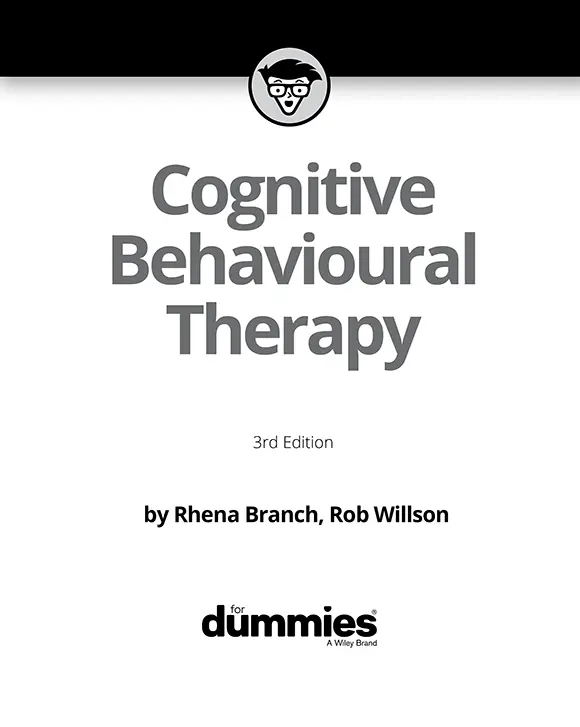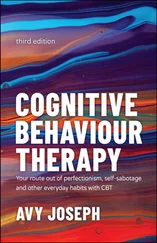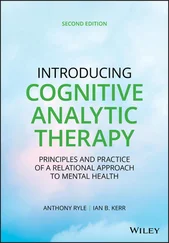
Cognitive Behavioural Therapy For Dummies®, 3rd Edition
Published by: John Wiley & Sons, Inc.,111 River Street, Hoboken, NJ 07030-5774, www.wiley.com
Copyright © 2020 by John Wiley & Sons, Inc., Hoboken, New Jersey
Published simultaneously in Canada
No part of this publication may be reproduced, stored in a retrieval system or transmitted in any form or by any means, electronic, mechanical, photocopying, recording, scanning or otherwise, except as permitted under Sections 107 or 108 of the 1976 United States Copyright Act, without the prior written permission of the Publisher. Requests to the Publisher for permission should be addressed to the Permissions Department, John Wiley & Sons, Inc., 111 River Street, Hoboken, NJ 07030, (201) 748-6011, fax (201) 748-6008, or online at http://www.wiley.com/go/permissions .
Trademarks: Wiley, For Dummies, the Dummies Man logo, Dummies.com, Making Everything Easier, and related trade dress are trademarks or registered trademarks of John Wiley & Sons, Inc., and may not be used without written permission. All other trademarks are the property of their respective owners. John Wiley & Sons, Inc., is not associated with any product or vendor mentioned in this book.
LIMIT OF LIABILITY/DISCLAIMER OF WARRANTY: THE CONTENTS OF THIS WORK ARE INTENDED TO FURTHER GENERAL SCIENTIFIC RESEARCH, UNDERSTANDING, AND DISCUSSION ONLY AND ARE NOT INTENDED AND SHOULD NOT BE RELIED UPON AS RECOMMENDING OR PROMOTING A SPECIFIC METHOD, DIAGNOSIS, OR TREATMENT BY PHYSICIANS FOR ANY PARTICULAR PATIENT. THE PUBLISHER AND THE AUTHOR MAKE NO REPRESENTATIONS OR WARRANTIES WITH RESPECT TO THE ACCURACY OR COMPLETENESS OF THE CONTENTS OF THIS WORK AND SPECIFICALLY DISCLAIM ALL WARRANTIES, INCLUDING WITHOUT LIMITATION ANY IMPLIED WARRANTIES OF FITNESS FOR A PARTICULAR PURPOSE. IN VIEW OF ONGOING RESEARCH, EQUIPMENT MODIFICATIONS, CHANGES IN GOVERNMENTAL REGULATIONS, AND THE CONSTANT FLOW OF INFORMATION, THE READER IS URGED TO REVIEW AND EVALUATE THE INFORMATION PROVIDED IN THE PACKAGE INSERT OR INSTRUCTIONS FOR EACH MEDICINE, EQUIPMENT, OR DEVICE FOR, AMONG OTHER THINGS, ANY CHANGES IN THE INSTRUCTIONS OR INDICATION OF USAGE AND FOR ADDED WARNINGS AND PRECAUTIONS. READERS SHOULD CONSULT WITH A SPECIALIST WHERE APPROPRIATE. NEITHER THE PUBLISHER NOR THE AUTHOR SHALL BE LIABLE FOR ANY DAMAGES ARISING HEREFROM.
For general information on our other products and services, please contact our Customer Care Department within the U.S. at 877-762-2974, outside the U.S. at 317-572-3993, or fax 317-572-4002. For technical support, please visit https://hub.wiley.com/community/support/dummies .
Wiley publishes in a variety of print and electronic formats and by print-on-demand. Some material included with standard print versions of this book may not be included in e-books or in print-on-demand. If this book refers to media such as a CD or DVD that is not included in the version you purchased, you may download this material at http://booksupport.wiley.com . For more information about Wiley products, visit www.wiley.com .
Library of Congress Control Number: 2019953011
ISBN 978-1-119-60112-8 (pbk); ISBN 978-1-119-60132-6 (ebk); ISBN 978-1-119-60133-3 (ebk)
Cognitive Behavioural Therapy For Dummies®
To view this book's Cheat Sheet, simply go to www.dummies.comand search for “Cognitive Behavioural Therapy For Dummies Cheat Sheet” in the Search box.
Table of Contents
1 Cover
2 Introduction Introduction C ognitive behavioural therapy , or CBT, continues to grow in popularity as an efficient and long lasting treatment for many different types of psychological problems. Increasingly, CBT is the treatment your doctor is most likely to offer you if you consult him with concerns about your mood. If the word psychological sends you running from the room screaming, try to consider the term referring to problems that affect your emotional rather than your physical sense of well-being. At some point in your life, something’s going to go a bit wrong with your body. So why on earth do humans assume that their minds and emotions should be above the odd hiccup, upset, or even more serious difficulty? Happily, fewer stigmas about mental health difficulties like anxiety and depression exist now than when this book first published in 2005). This book gives you a comprehensive introduction to the theory and application of CBT techniques. Although we don’t have the space to go into nitty-gritty specifics about how to use CBT to overcome every type of emotional or psychological problem, we do try to lead you in a helpful direction by giving an overview of some of the most common problems people encounter. You may not have realized just how common mental health problems can be. We aim to help you see that you aren’t alone, that there is help and that you certainly have no need to be embarrassed about seeking support! We believe all the CBT principles and strategies outlined in this book can improve your life and help you to stay healthy, regardless of whether you’ve worked with or are currently working with a psychiatrist or other psychological professional. In addition, whether you think your problems are minimal, you’re crushing this living thing, you feel mildly depressed, or you’ve had years of uncomfortable psychological symptoms, CBT can help you. We ask you to be open-minded and to use the stuff in this book to make your life better and fuller.
About This Book Foolish Assumptions Icons Used in This Book Beyond the Book Where to Go From Here
3 Part 1: Introducing CBT Basics Chapter 1: You Feel the Way You Think Using Scientifically Tested Methods Understanding CBT Making the Thought–Feeling Link Learning Your ABCs Characterising CBT Chapter 2: Spotting Errors in Your Thinking Catastrophising: Turning Mountains Back Into Molehills All-or-Nothing Thinking: Finding Somewhere In-between Fortune-Telling: Stepping Away From the Crystal Ball Mind-Reading: Taking Your Guesses with a Pinch of Salt Emotional Reasoning: Reminding Yourself That Feelings Aren’t Facts Overgeneralising: Avoiding the Part/Whole Error Labelling: Giving Up the Rating Game Making Demands: Thinking Flexibly Mental Filtering: Keeping an Open Mind Disqualifying the Positive: Keeping the Baby and Throwing Out the Bathwater Low Frustration Tolerance: Realising You Can Bear the ‘Unbearable’ Personalising: Removing Yourself from the Centre of the Universe Chapter 3: Tackling Toxic Thoughts Catching NATs Stepping Through the ABC Form I Creating Constructive Alternatives: Completing the ABC Form II Chapter 4: Designing and Conducting Behavioural Experiments Seeing for Yourself: Reasons for Doing Behavioural Experiments Testing Out Predictions Seeking Evidence to See Which Theory Best Fits the Facts Conducting Surveys Making Observations Ensuring Successful Behavioural Experiments Keeping Records of Your Experiments Chapter 5: Pay Attention! Refocusing and Retraining Your Awareness Training in Task Concentration Becoming More Mindful
4 Part 2: Charting the Course: Defining Problems and Setting Goals Chapter 6: Exploring Emotions Naming Your Feelings Thinking What to Feel Understanding the Anatomy of Emotions Comparing Healthy and Unhealthy Emotions Seeing Similarities in Your Physical Sensations Identifying Feelings about Feelings Defining Your Emotional Problems Chapter 7: Identifying Solutions That Cause You Problems When Feeling Better Can Make Your Problems Worse Getting Over Depression without Getting Yourself Down Loosening Your Grip on Control Feeling Secure in an Uncertain World Surmounting the Side Effects of Excessive Safety-Seeking Wending Your Way Out of Worry Preventing the Perpetuation of Your Problems Helping Yourself: Putting the Petals on Your Vicious Flower Chapter 8: Setting Your Sights on Goals Putting SPORT into Your Goals Homing In on How You Want to Be Different Maximising Your Motivation
Читать дальше













